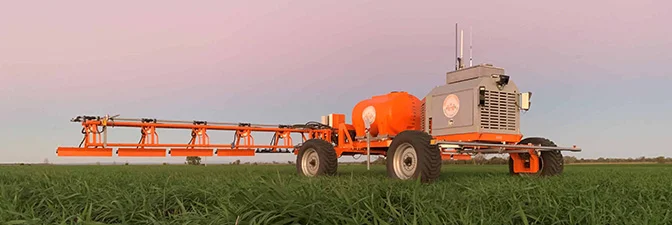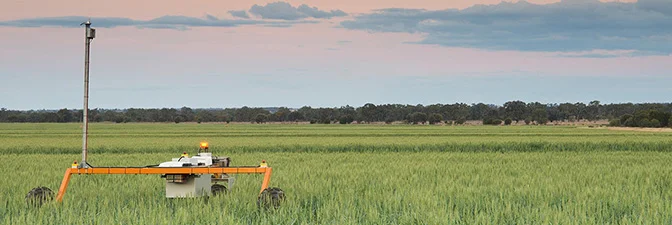
Agriculture is proving to be a growing area of interest amongst technology start-ups and funders.
This year alone, Western Australia’s AgriStart CONNECT programme received a $500,000 grant to support regional ag tech start-ups in the state, while agricultural data start-up FluroSat received $3 million in grant funding.
But to Andrew Bate, one of the pioneers of on farm robotic technology, automation has been coming to agriculture for a while now.
AgriBusiness spoke to Andrew back in 2015, just after he and his wife Jocie founded their own agricultural robotics company SwarmFarm Robotics, which they developed in partnership with The Australian Centre for Field Robotics at the University of Sydney and Queensland University of Technology.
At the time Andrew explained SwarmFarm as a system that could autonomously perform a number of agronomic tasks in a range of agricultural settings.
SwarmFarm has since developed driverless robotics systems for spot and blanket spraying, fertiliser application and turf mowing and has worked on trials with some of the largest farming organisations in turf, cotton and sugar in Australia.
Andrew has been involved in commercial agriculture for more than 20 years, with his family farm made up of 4000 hectares of cereals with a mix of summer and winter crop, plus 2000 head of beef cattle. This background played a key role in his decision to develop robotic tools, which ultimately led to the establishment of SwarmFarm.
SwarmFarm’s “swarms” are small, simple robotic farming machines that use precision technology to find and kill weeds, and complete simple farming tasks with greater effectiveness and less impact on soils and the environment.
“If you think about the perfect conditions for growing and maintaining a crop, it’s not with large machines, it’s with something quite small, slow, more methodical and accurate,” Andrew said.
“That’s what our robots offer.
“They’re small autonomous farming machines. They’re very different to a driverless tractor, in that they’re little, lightweight, can easily automate existing field practices, and are far more accurate than traditional farming equipment.
“We’re creating new farming systems from the ground up, and its robotic technology that makes these new farming systems possible.”
Because they’re autonomous and robotic, the major benefit for farmers is that the robots can work around the clock – so they don’t have to.
“Our swarms can be in the paddock multiple times of the day, whether its 3am or 6am – because of that they’re also unlimited in the number of applications they can do in a day.”
SwarmFarm now employ a team of software developers who are constantly developing new tools and software, which they then trial in real time and in real farming situations.
Will McCarthy is an agricultural engineer who works on developing new software for the SwarmFarm robots.
“What stands out for us is the software developers can put a new bit of software on a robot straight away, and within an hour of completing that software package it can be out on a robot, in the paddock, in real farm conditions,” Will said.
“We’re attracting the best and brightest engineers and we’re actually bringing them here to Emerald, getting them out on the field.”
Farmers working with SwarmFarm on trials have reported a reduction in their chemical usage when using the swarms and, because the direct targeting can pick up weeds that are usually missed, there’s also less impact on the environment.
“The swarms allow farmers to be more precise in their farm management, which means they can reduce or better manage the amount of chemical being used,” Andrew said.
“This protects the soil and any nearby catchments from chemical residue.
“They also free-up farmers and skilled workers to work in other areas of their businesses, rather than wasting time and energy on the tractor. That means more time out in the paddock with dirt on their boots actually being farmers rather than machinery operators.”
For more information about SwarmFarm robotics and how to make the swarms work for you, and your farm, visit the website: swarmfarm
AGERRIS
Salah Sukkarieh, the Professor who helped develop SwarmFarm’s robotic technology, is now also the CEO of automated field robotics startup, Agerris. The company received $6.5 million in seed funding earlier this year from research commercialisation fund, Uniseed Group, to commercialise its automated farm equipment.
Another business formed from research undertaken by Salah and his Robotics and Intelligent Systems team at University of Sydney, Agerris is working on developing robotic systems that use artificial intelligence and decision mapping, to undertake a number of onfarm tasks, from non-chemical weeding and intelligent spraying to harvesting and eventually even fruit picking.
For more information go to: uniseed
